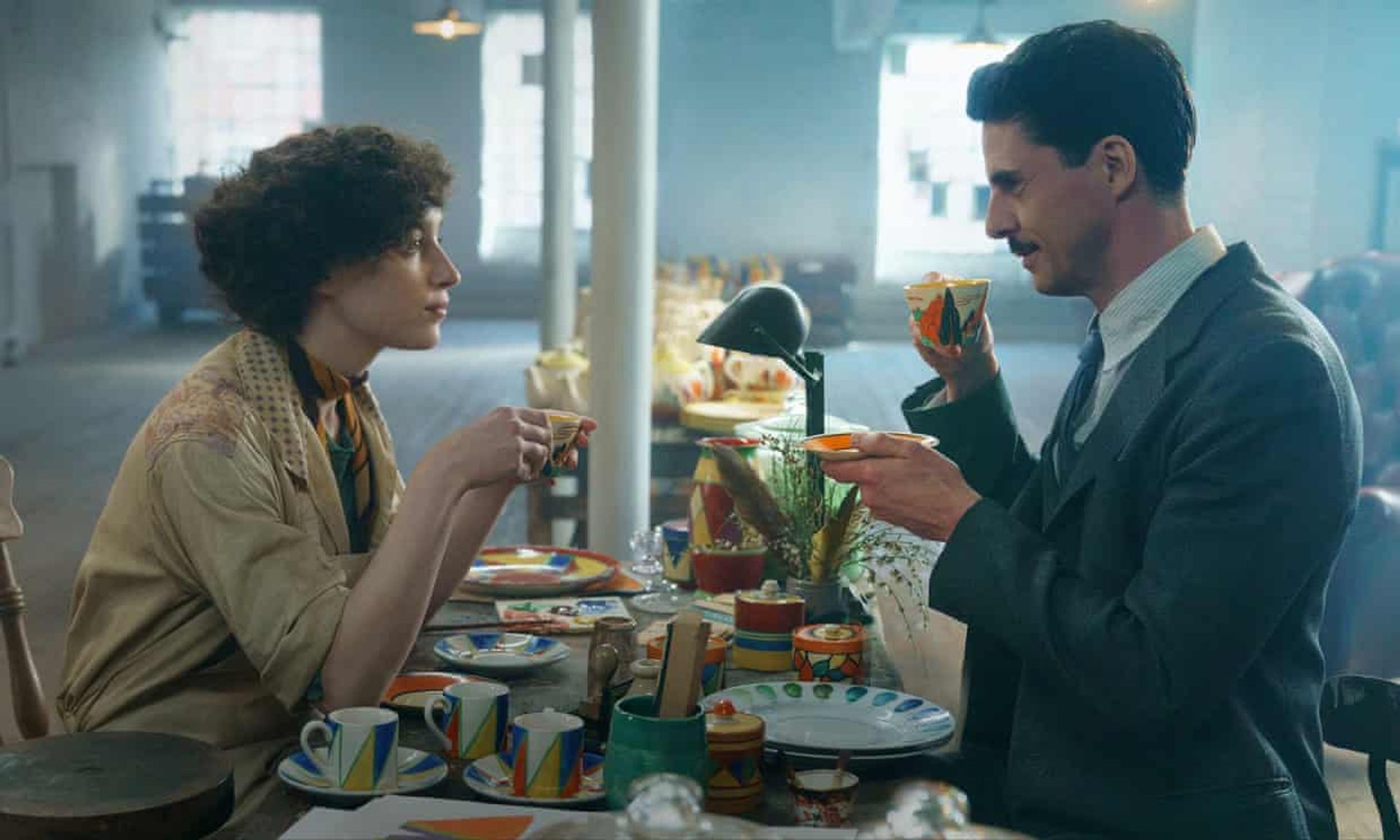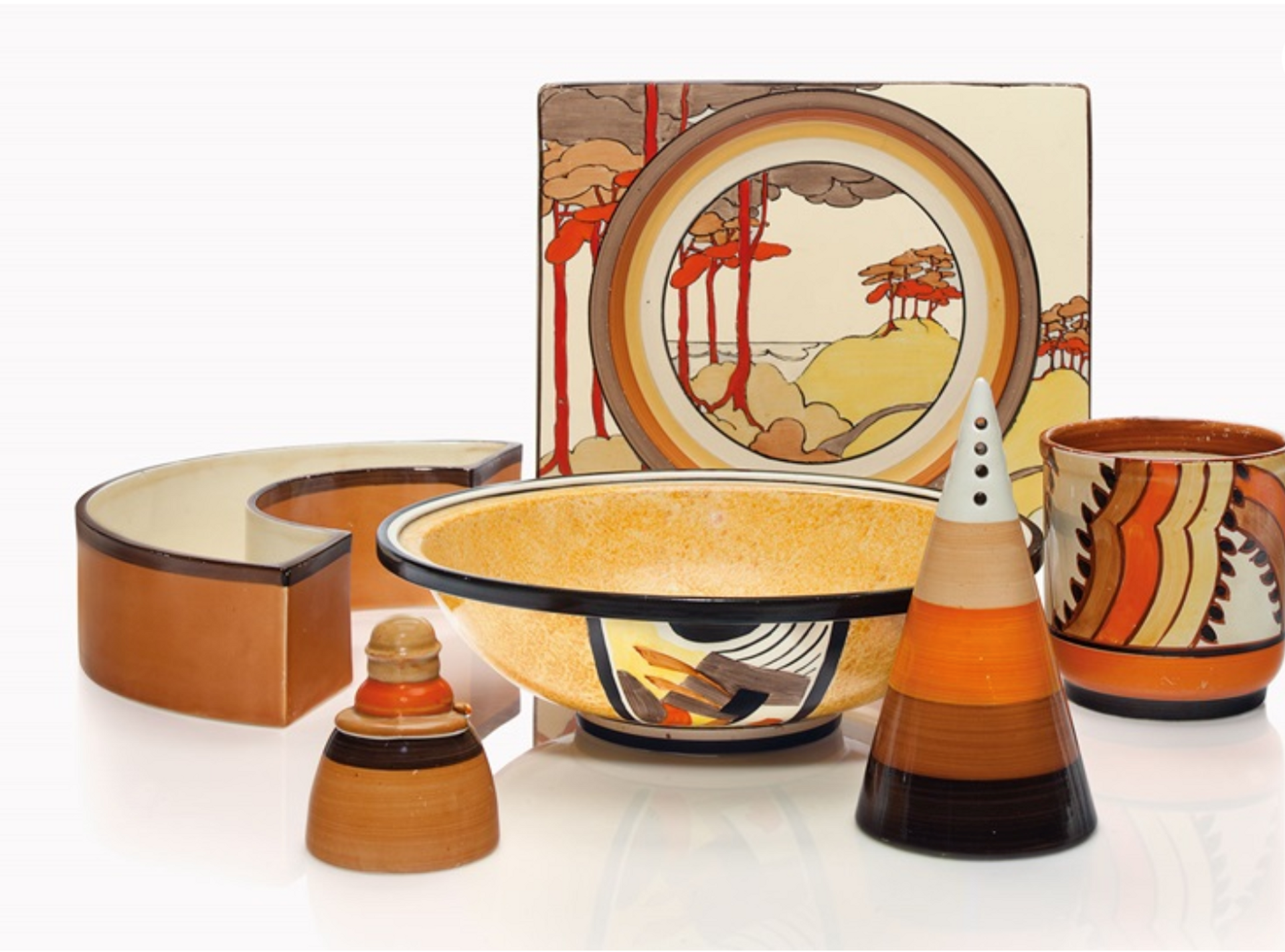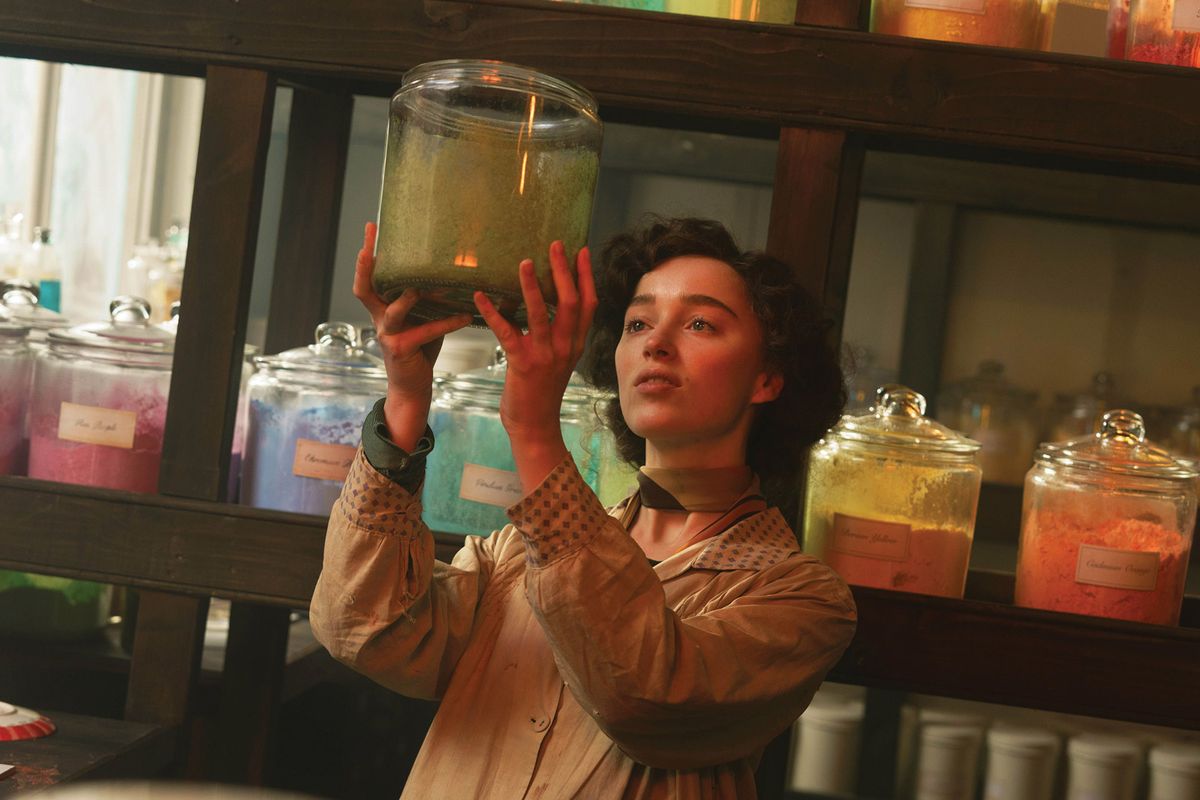As a young child, it was my job to lay the table whenever we visited my grandmother’s home. My introduction to ceramics came as I put out her everyday Poole Pottery service, a pale turquoise dual-tone affair with a dolphin backstamp on the reverse. But sometimes I would sneak a look at the top shelf of her kitchen dresser and my eyes would be drawn to The Tea Set That Was Never Used—a jaunty collection of angular, inverted conical shapes for the cups and matching pots, jug and sugar bowl, in a daring clash of orange and blue hues. “That is Clarice Cliff,” my grandmother told me. “She was a very famous designer once upon a time.”
Outside ceramic and pottery circles, the name of Clarice Cliff may not be so well known these days but Caspian Films’s new drama, The Colour Room, directed by Claire McCarthy from a screenplay by Claire Peate, is bringing Cliff’s achievements back into the spotlight. Best known for her Art Deco-inspired pieces, characterised by bold outlines and a vivid colour palette, Cliff’s quirky angular shapes were initially derided by the men who dominated the industry. However, she soon proved there was a market for her designs, becoming the first British woman to become a head designer and later having her own factory. At its height, between the wars, her business sold 8.4 million items, including tea sets, jazz-age figurines and her signature Yo Yo vases, to Australia, New Zealand and the US.

Phoebe Dynevor (Clarice Cliff) with Matthew Goode (Colley Shorter) in The Colour Room. Photograph: Caspian Films/Sky UK Limited
“The film captures the atmosphere of the time brilliantly,” says the potter Emma Bailey. “I heard stories from my grandparents, who also worked in the industry, and it was a world devoid of colour. And then this young woman came along and turned the industry upside down.” Bailey started off painting Cliff reproductions for Wedgwood and has been described as her heir. She brushes this off and says she designs what she feels. But, she adds: “It is like Clarice is in me.”
It was a world devoid of colour. Then this young woman came along and turned the industry upside down
The Colour Room, with Phoebe Dynevor, one of the stars of the racy Netflix period drama Bridgerton, as Cliff, alongside David Morrissey and Matthew Goode, focuses on Cliff’s early life and career that began when she left school at 13 to start work as an enameller at a local factory near Stoke-on-Trent, the huddle of six English towns at the heart of the area known as The Potteries. It was the centre of the ceramic industry and many commercial producers as well as smaller studios still have a presence there today.

A group of Clarice Cliff wares. 20th century, various black printed script, sold at Christie's in 2017. Courtesy of Christie's
Noted for its huge bottle kilns—the standard bearers for the area’s ambition for Unesco World Heritage Site status that are seen at the beginning of the film belching black smoke—The Potteries is a fine example of the UK’s industrial as well as artistic heritage. In the 1920s, the whole area was choked with smoke and grit, says Bailey. In this monochrome world, it is no wonder that the young Clarice stood out. The film’s producer Thembisa Cochrane and her team went to great lengths to recreate an authentic landscape, filming at Middleport Pottery, where we first meet Cliff. She bursts onto the screen in a glorious teal coat, as if to insist she would not allow herself—or her revolutionary ideas—to blend into the sooty surroundings. This and the film’s other striking costumes are by Anushia Nieradzik, who is also a painter—a combination deliberately harnessed by the production team, Cochrane says.
Specialist advice on the film came from one of the world’s foremost experts on Cliff, the auctioneer Will Farmer, who is the ceramics and glass expert on the BBC’s Sunday-evening staple Antiques Roadshow. Eagle-eyed Roadshow watchers may also spot his cameo performance in an early scene. Farmer was joined by the ceramicist and lecturer Louise Adams—granddaughter of John Adams of Poole Pottery fame—who, with her partner Mark Delf, was the on-set modeller and sculptor. This meant that a full artistic team was able to coach the cast, who needed to be able to handle clay convincingly. Delf was also responsible for the reproduction of Cliff’s bust of the first wife of her employer, Colley Shorter. He commissioned the bust from her when he became aware of her talents—he saw potential in Cliff’s eye for colour and her business savvy. Cliff and Shorter later married, and their affair is a key element of The Colour Room’s story.

Clarice Cliff in 1929. Photograph: ANL/Rex/Shutterstock
Cliff died in 1972 just after a retrospective of her work in Brighton. She went on to become highly collectable: in 2003, a charger sold at Christie’s for £39,950 and, in 2009, Farmer sold a similar piece for £24,000 at Fieldings auctioneers in Stourbridge. She is still sought after today and her work is held in collections at The Metropolitan Museum of Art, New York, and the Victoria and Albert Museum, London, where gems including a vase from her Sunray series from around 1929 are on display.
While she was not the only female designer who emerged during the 1920s, she blazed a trail for others such as Susie Cooper, Mabel Leigh and Charlotte Rhead. She was the first woman designer to be the inspiration for a play commissioned by the Royal Shakespeare Company, Peter Whelan’s The Bright and Bold Design (1991). And now, there’s The Colour Room. Perhaps it will help new audiences revere her in the way my grandmother, and so many others of her generation, did.
• The Colour Room is in cinemas and on Sky Cinema in the UK


